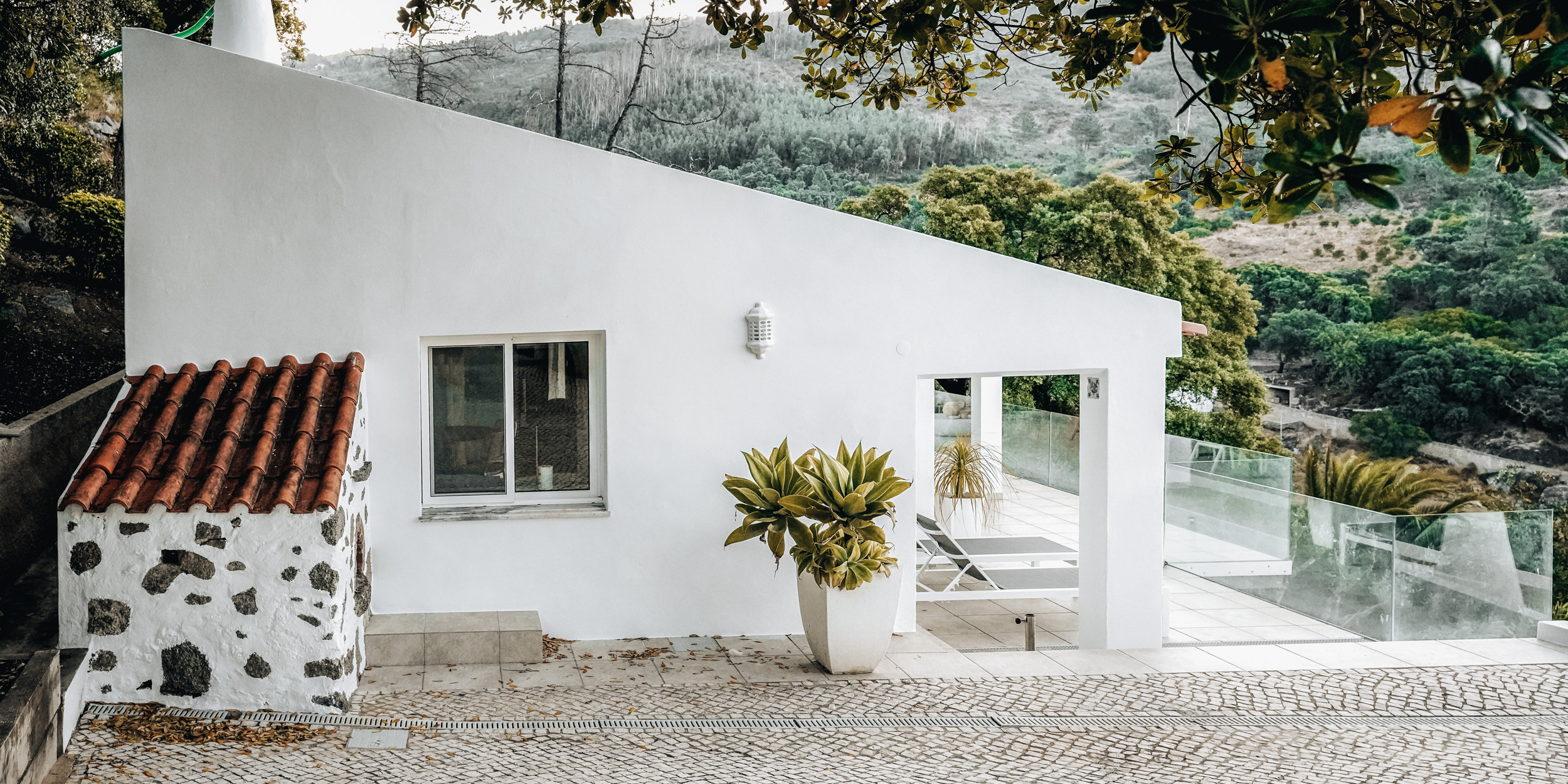
Casa MONCHIQUE Portugal
One day, a former client and friend of ours called me and said he had just bought a house in Portugal, and we wanted to see it together. I thought, "Sure, we've done it abroad before, so this will be a breeze." I love challenges.
First visit
It's a quaint little house on a slope above the Atlantic. It's not right by the sea, but that just adds to its tranquility. Surrounded by greenery, with its own mandarin and avocado trees in the garden. The size is ideal for summer living for two, about 60 m2, with an equally large terrace offering expansive views. A bonus is the separate guesthouse lower on the slope and a pool with a view. As is often the case, it initially seemed to be in better condition than what was revealed during the renovation. During our first visit, we decided to minimize the renovation of the house and the changes to the layout. Yes, the entire layout could have been completely revamped with a drastic intervention, but the result wouldn't have justified it. Moreover, we were wary of dealing with the authorities, as the location is under heritage protection.


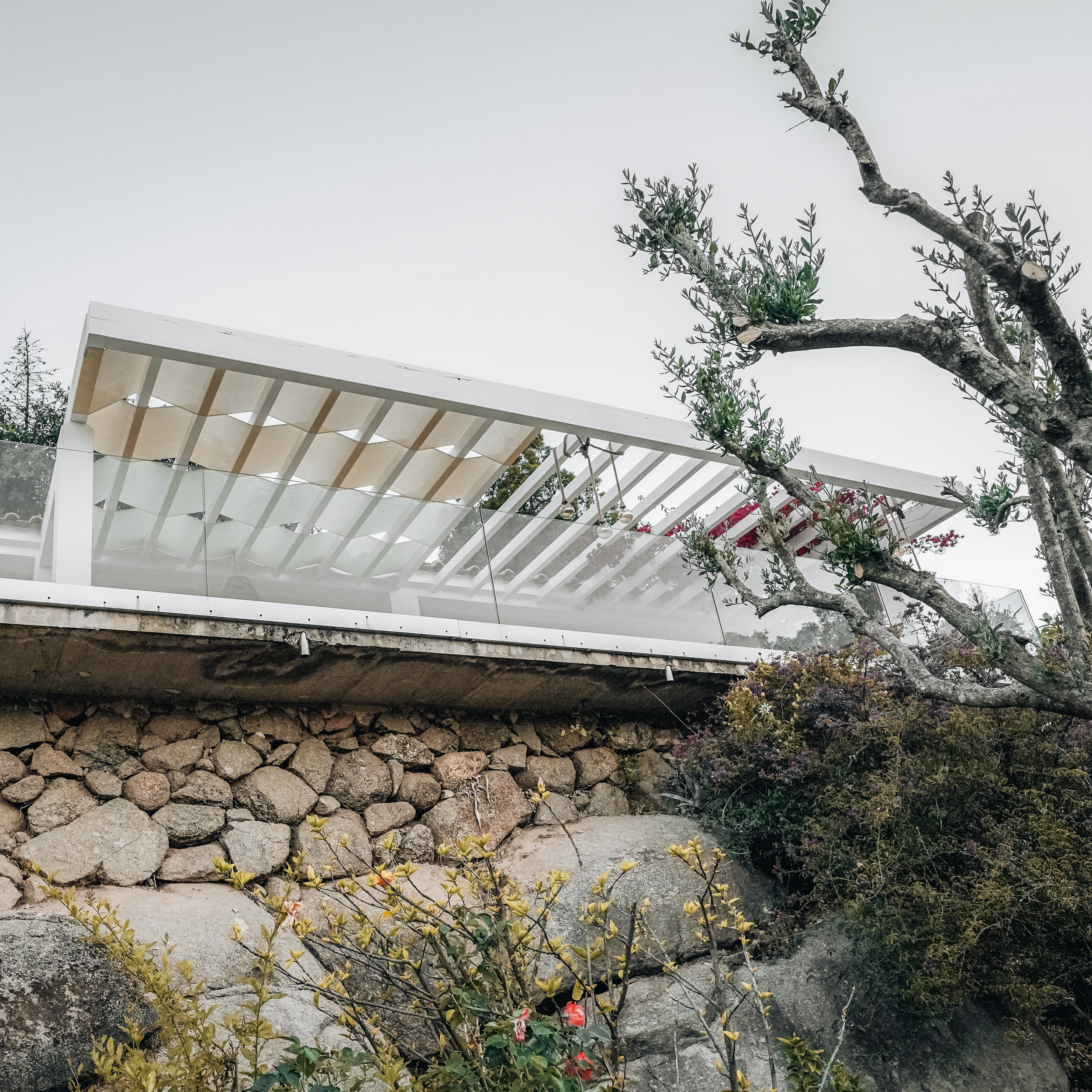
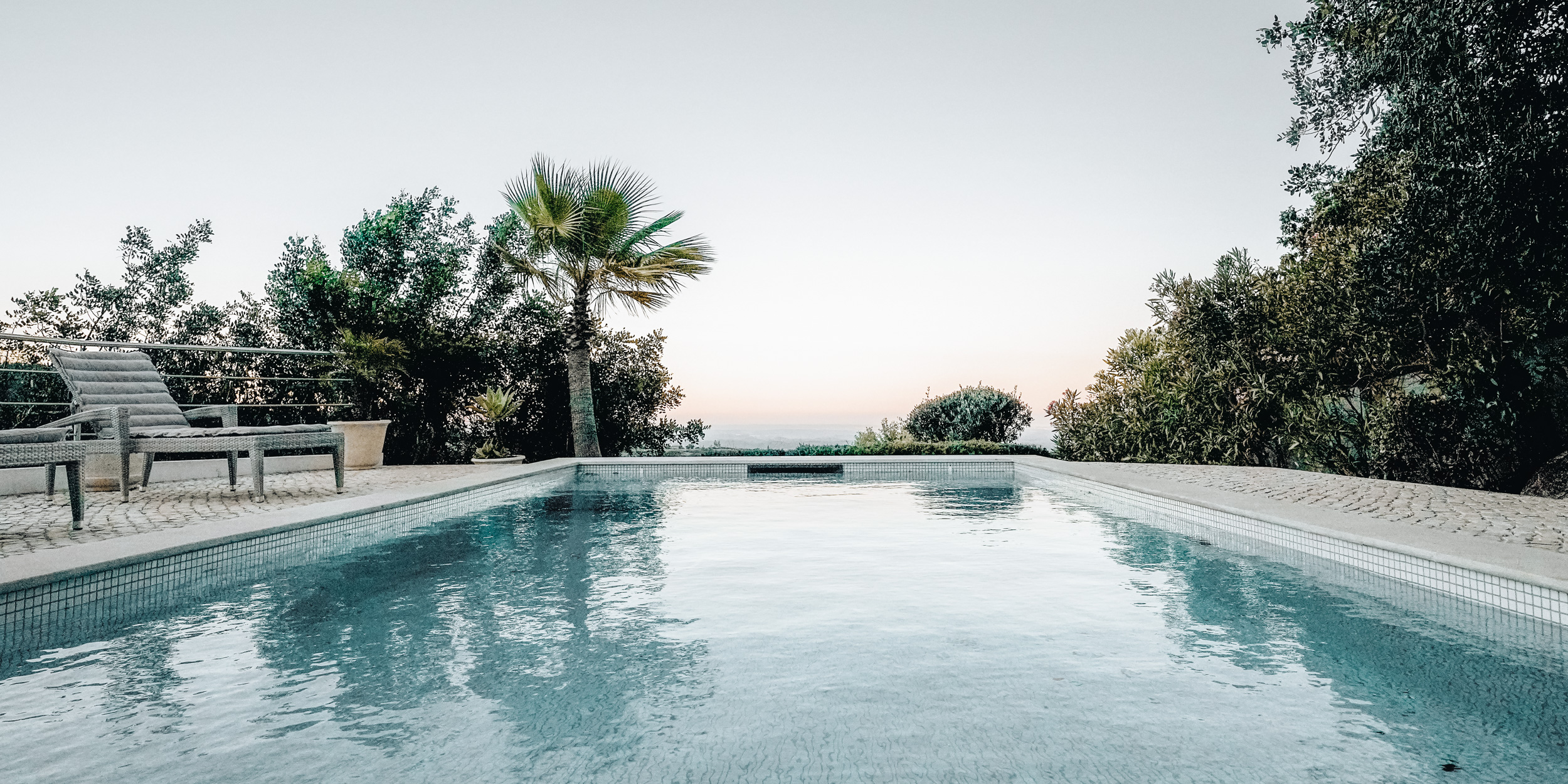
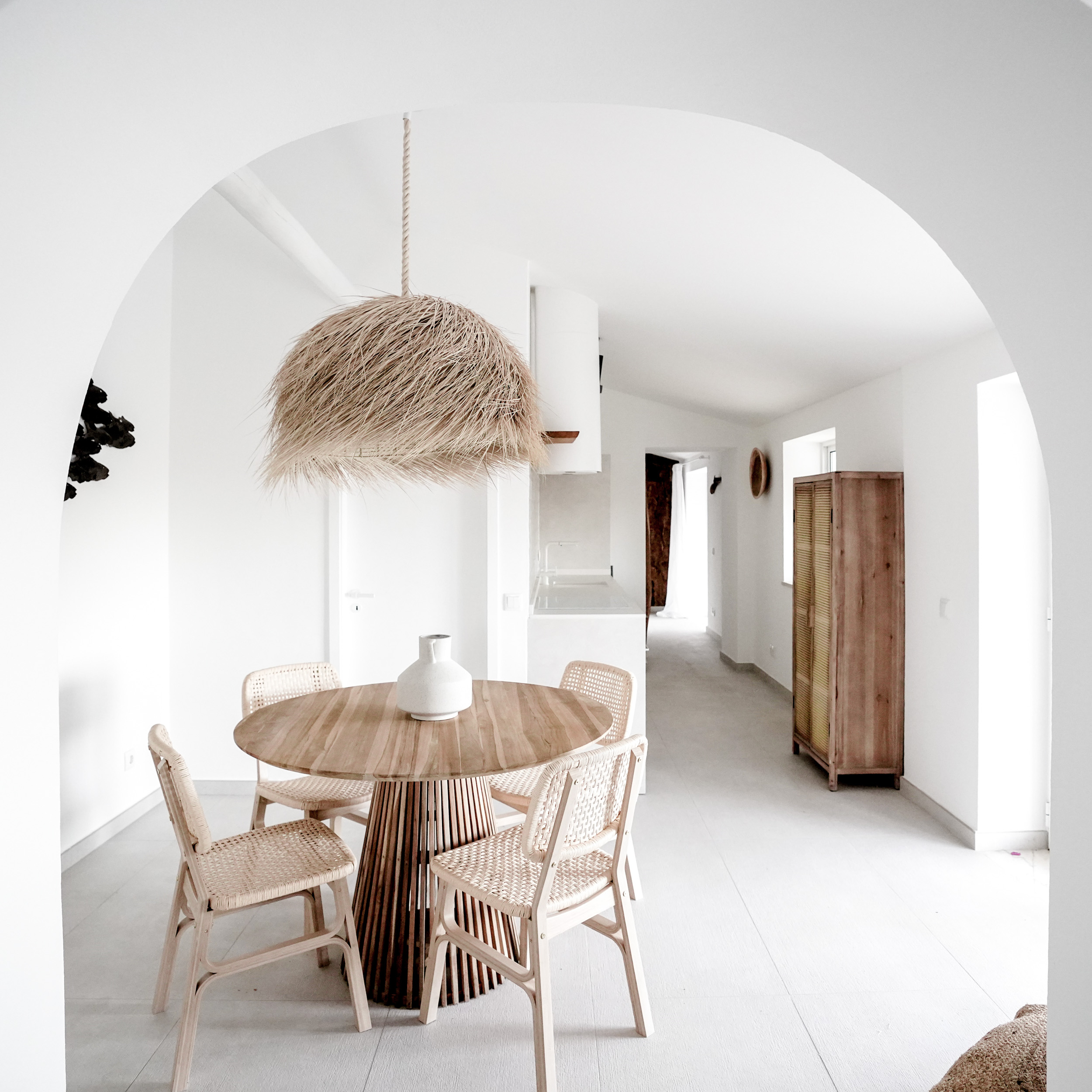
Beach vibes
Considering the location, we opted for a beach-style interior design for the house, featuring a combination of white and light natural wood and grass. We decided to try something different from the industrial minimalist interior we have at home. Tuning into such materials was actually quite pleasant. Change is interesting. The goal was to create a simple, welcoming space in natural tones with local materials.
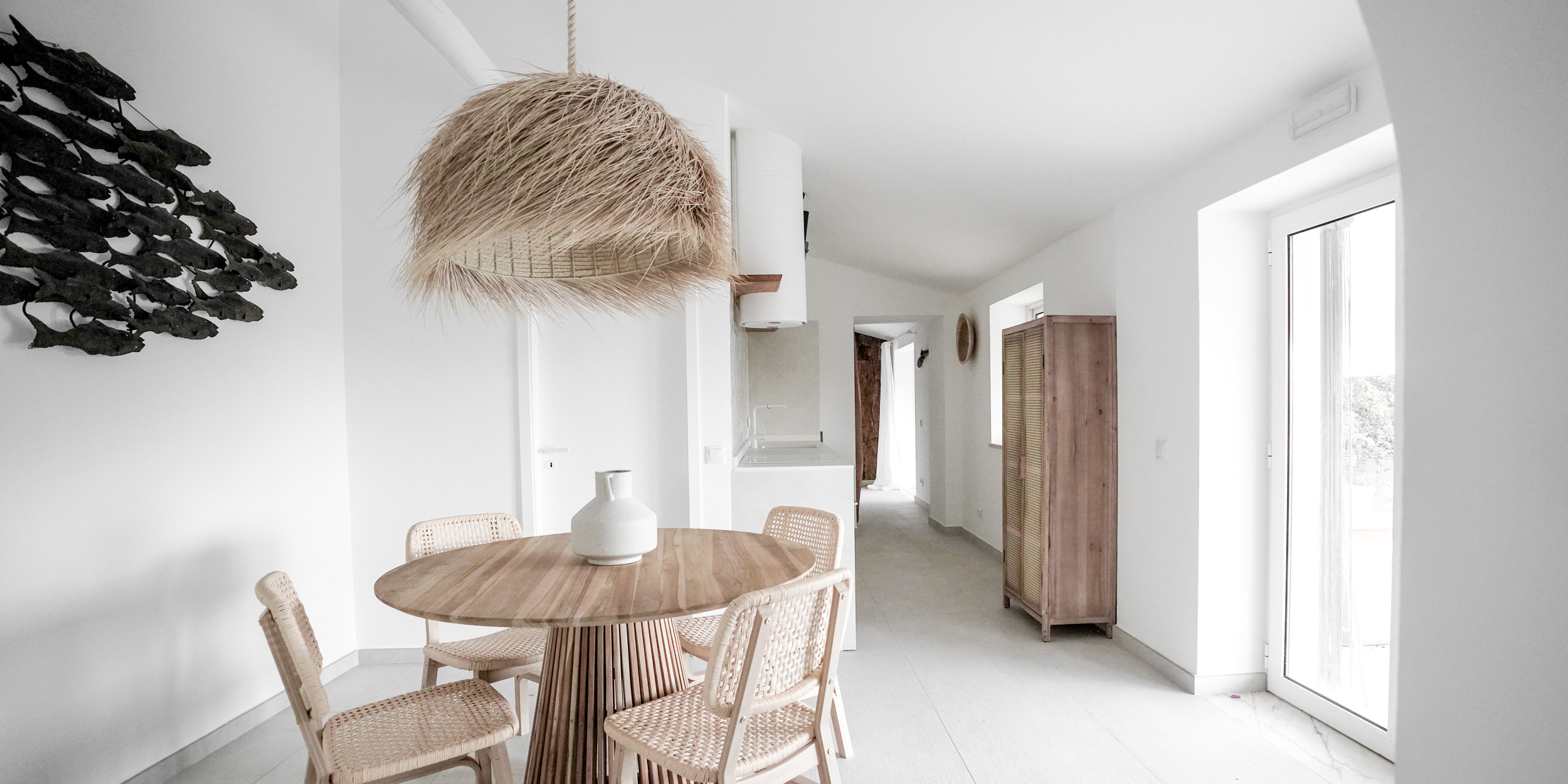


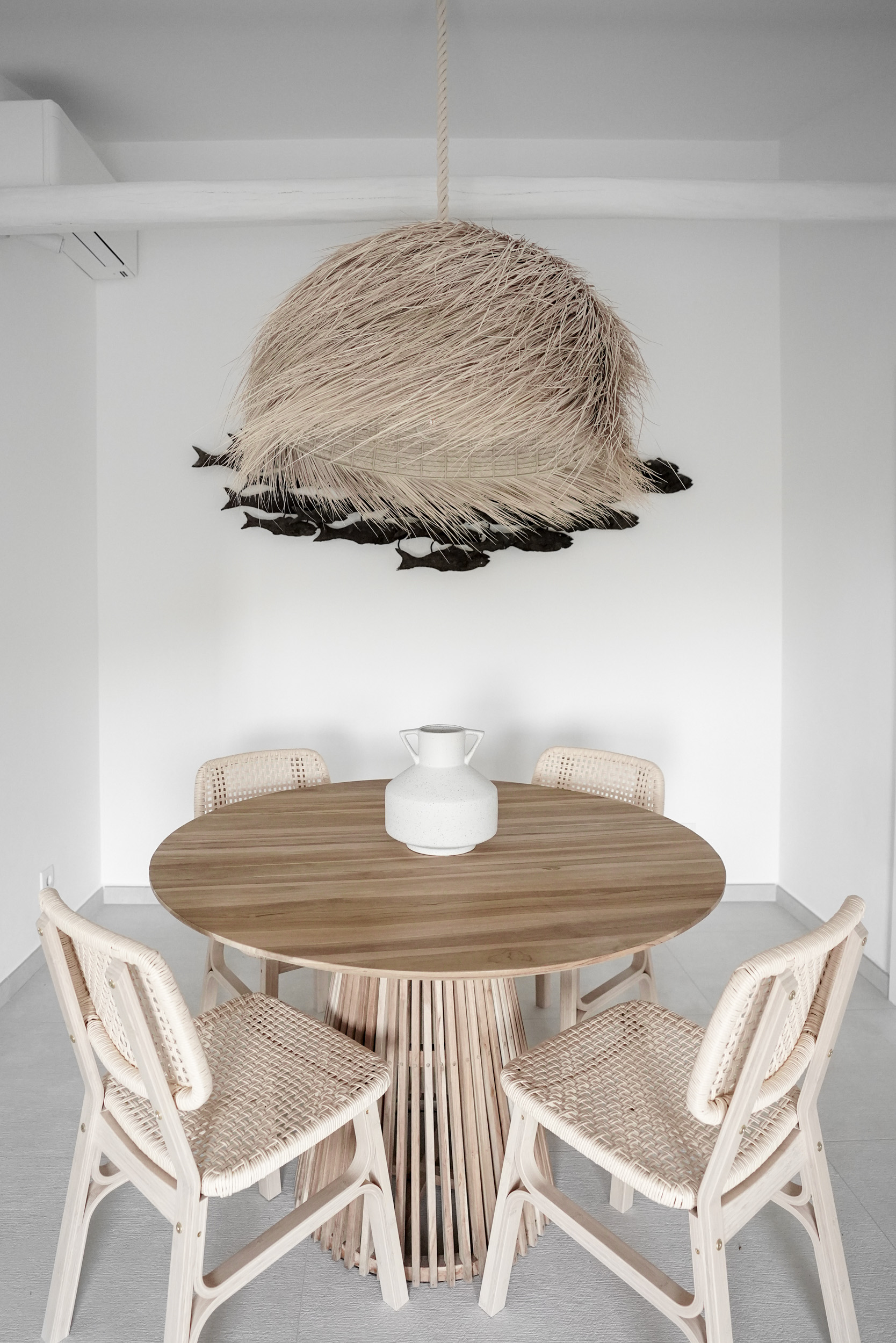
Local materials
One of the most interesting materials used in the interior became natural cork. Cork oaks grow everywhere around, so this material was an obvious choice. However, most of the cork offerings are classic boards, which are nothing special. The opposite is raw cork bark. A bit of a disappointment then was that the "Portuguese" cork came from Poland. Perhaps the biggest beach feature is a large grass chandelier above the dining table. To convince the client about it, I made a reservation at the Avenida Hotel in Lagos. After that, everything went smoothly.

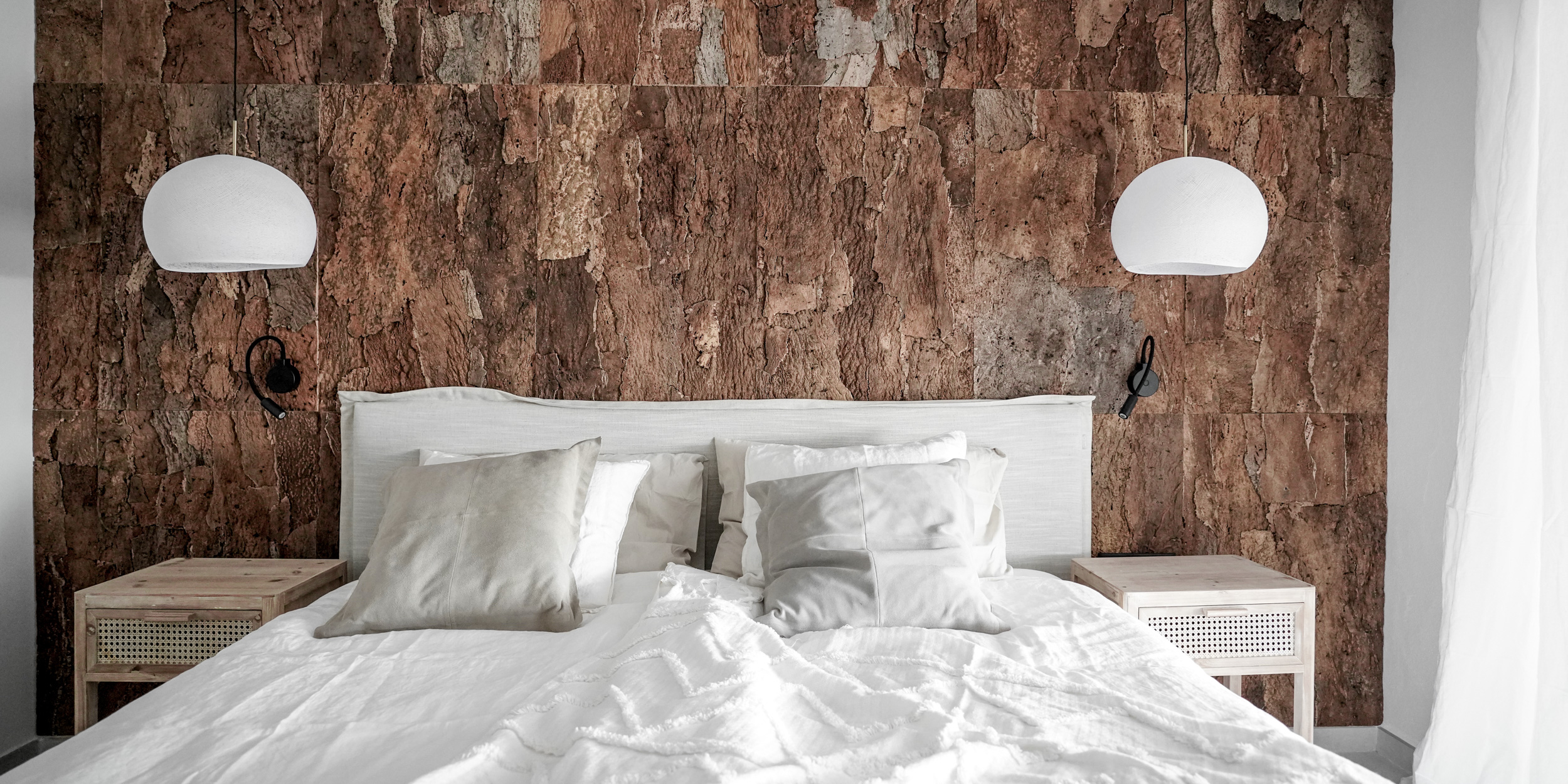

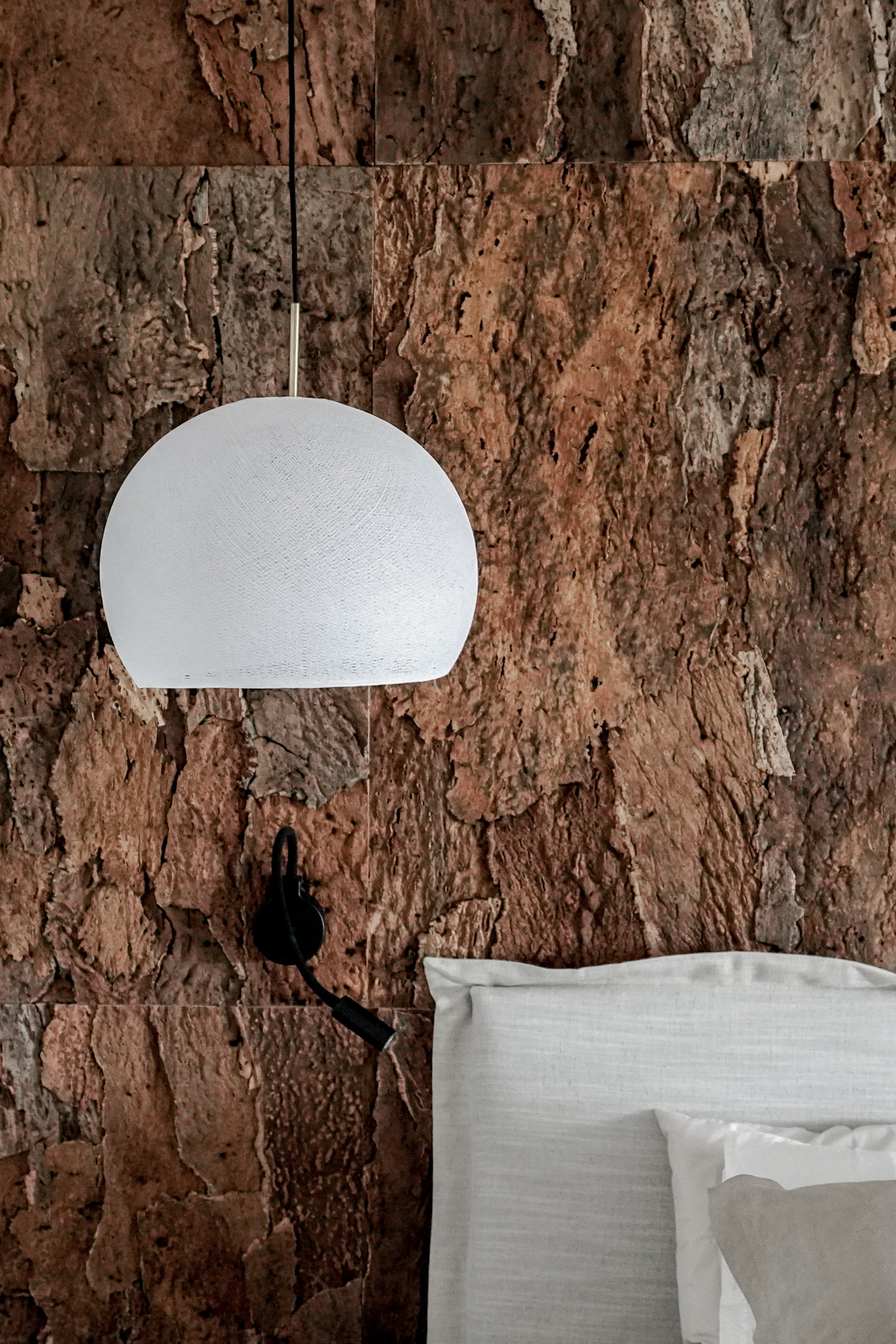
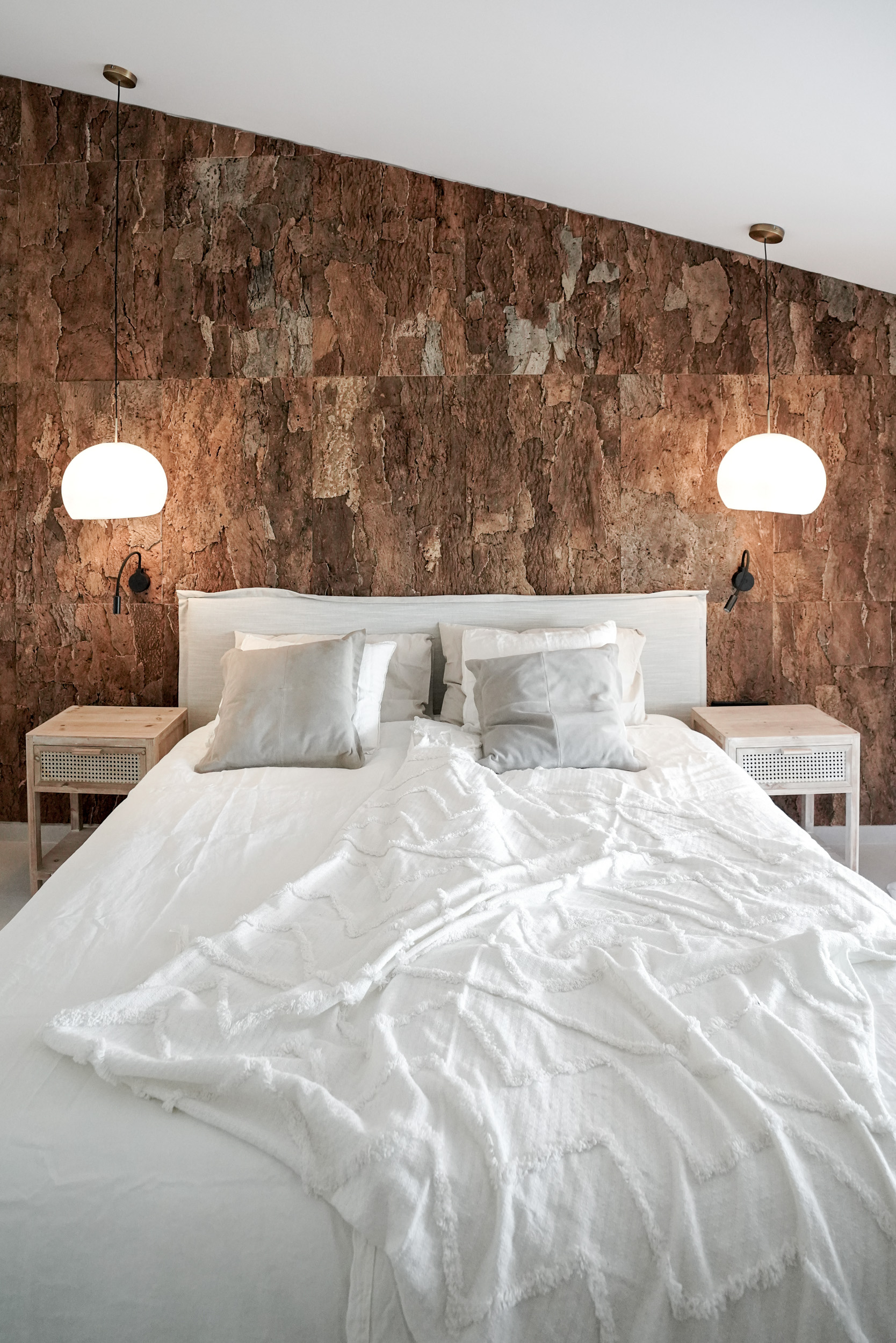
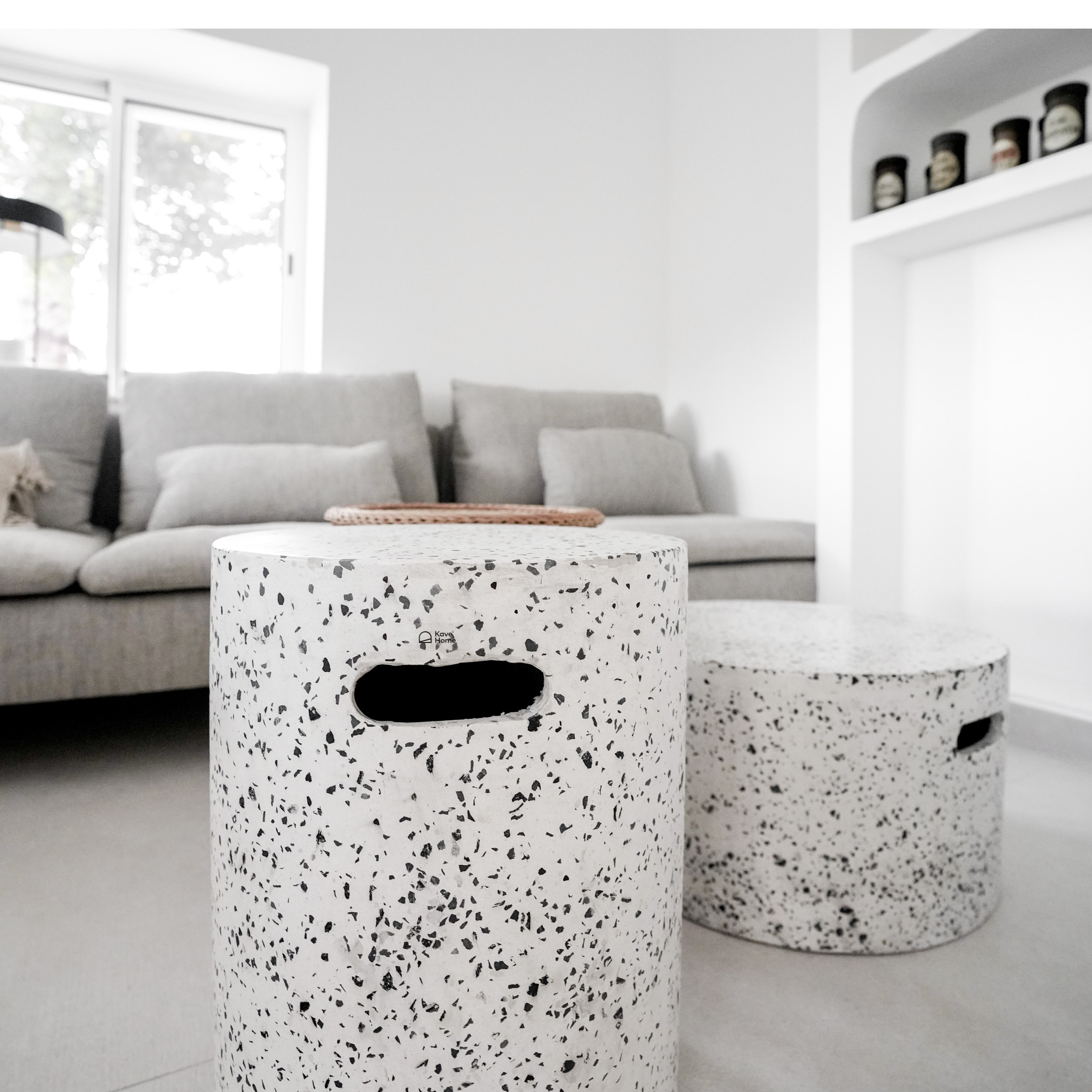
Choosing suppliers in Portugal
Right from the start, we considered the option we had already tried in Austria and Slovakia – bringing in all our own. But. It was too far away, getting suppliers across three thousand kilometers for the realization of a small house was simply nonsensical. So we switched to plan B, which was to find all local suppliers. That's easier said than done. First, we visited a few Czechs who already own properties in the Algarve to learn more about how things work. The experience was rather discouraging – dissuasion about how complicated it is, how everyone wants to scam you. We politely declined their recommended suppliers because they would surely have charged us for the "frustration of compatriots" as well. We did visit a few building supplies stores where we vainly looked for designer sinks, but in the end, we managed to assemble the whole team.
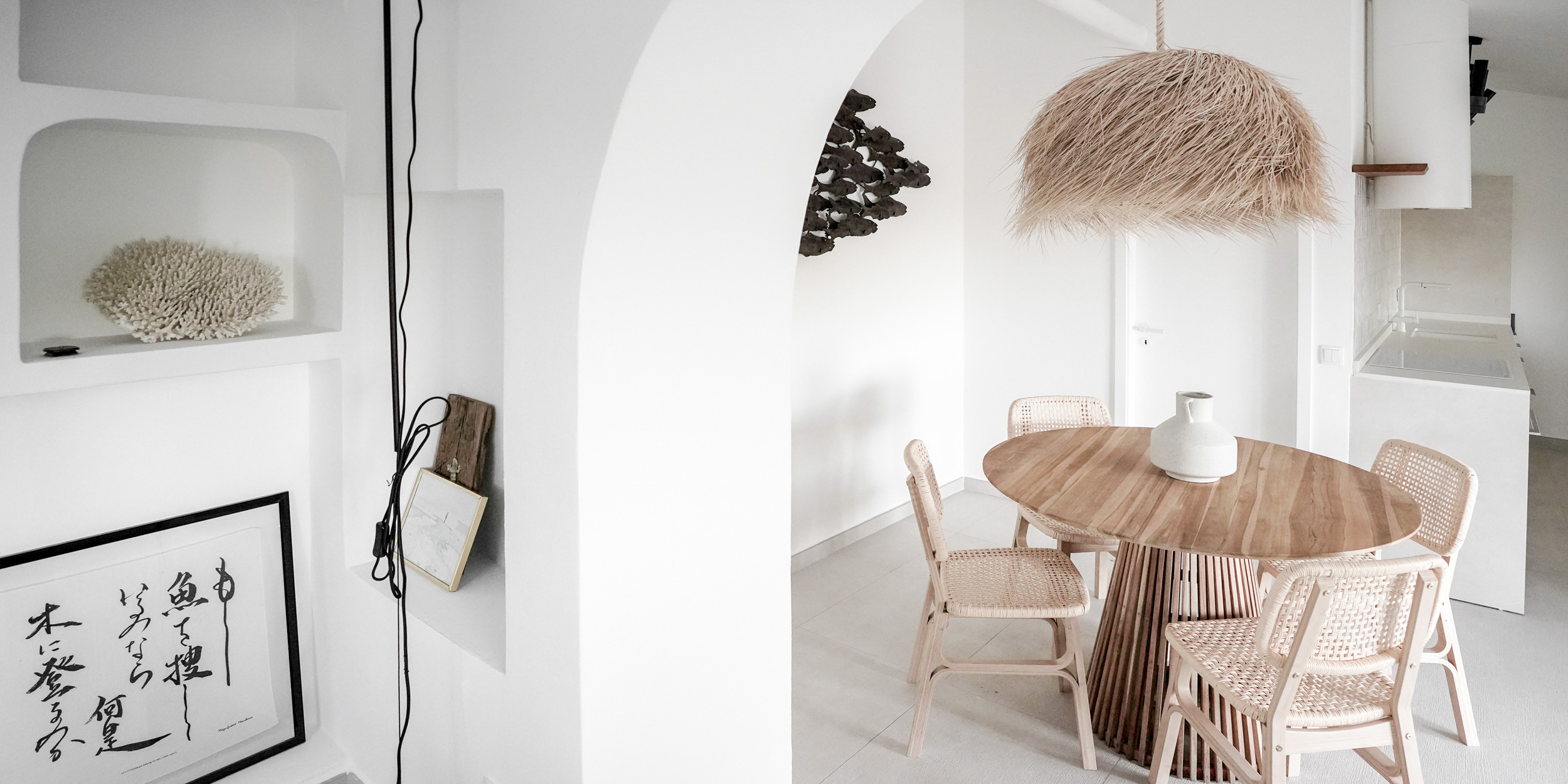

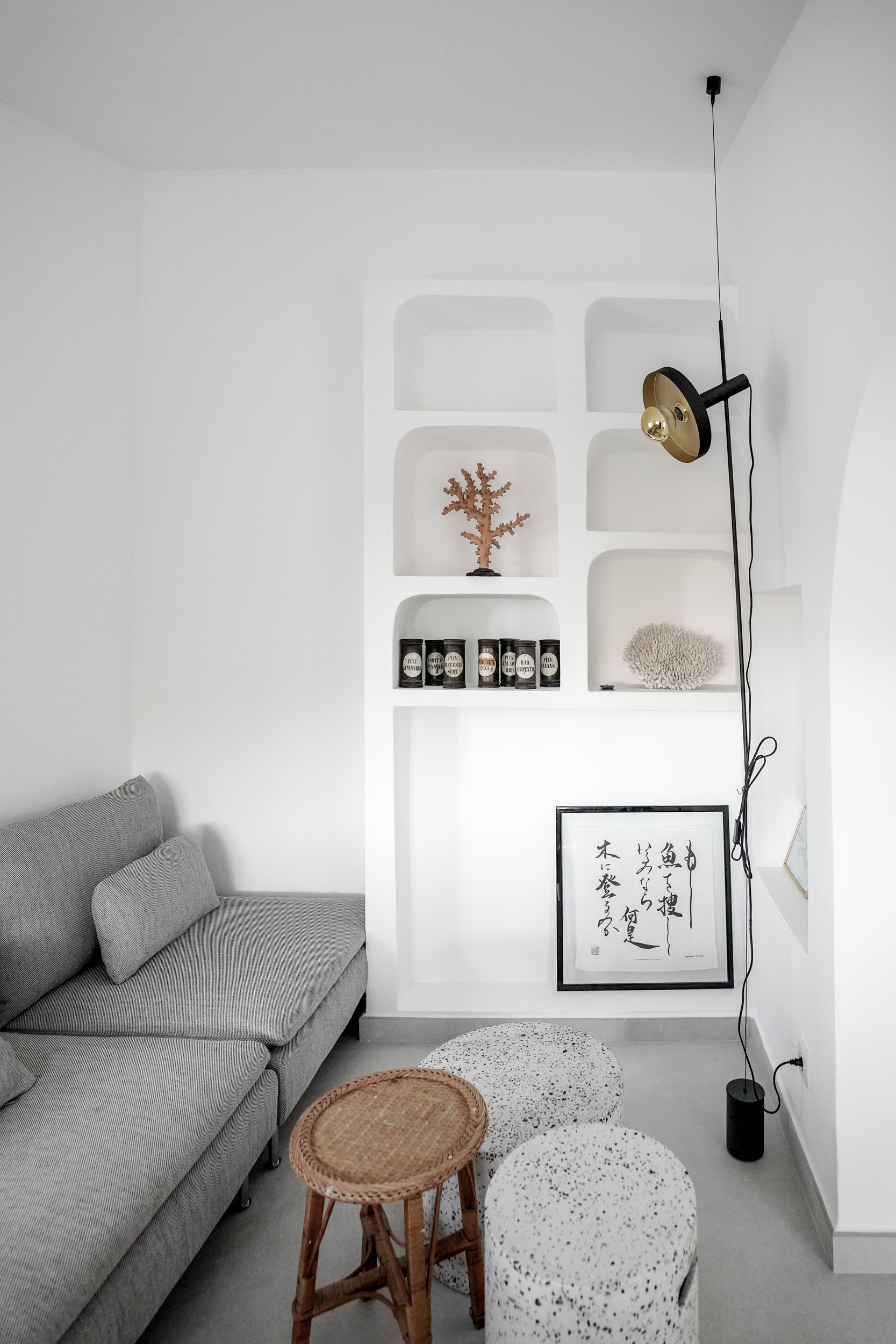

The renovation execution
It took us a while to fine-tune communication with the construction company, the format of drawings and documents, to make it understandable for them. We also had to harmonize our vocabulary because some terms we simply translated each in our own way. In the end, it was great. The first major surprise was roots growing under the flooring. They were everywhere. Through a small gap in the stone wall, the roots managed to spread across almost the entire floor. Another surprise in the already finished interior was the permeability of the stone wall. Since the house is built on a slope on rock, the entire rear facade is on the original ground. When it rains heavily, which can happen in the Algarve, water nicely flows down the stones into the interior. This explained the amount of nonsensical original false walls that were masking those damp spots. Even though the interior was almost finished, painted, and nearly ready for handover, we had to add ventilated false walls.
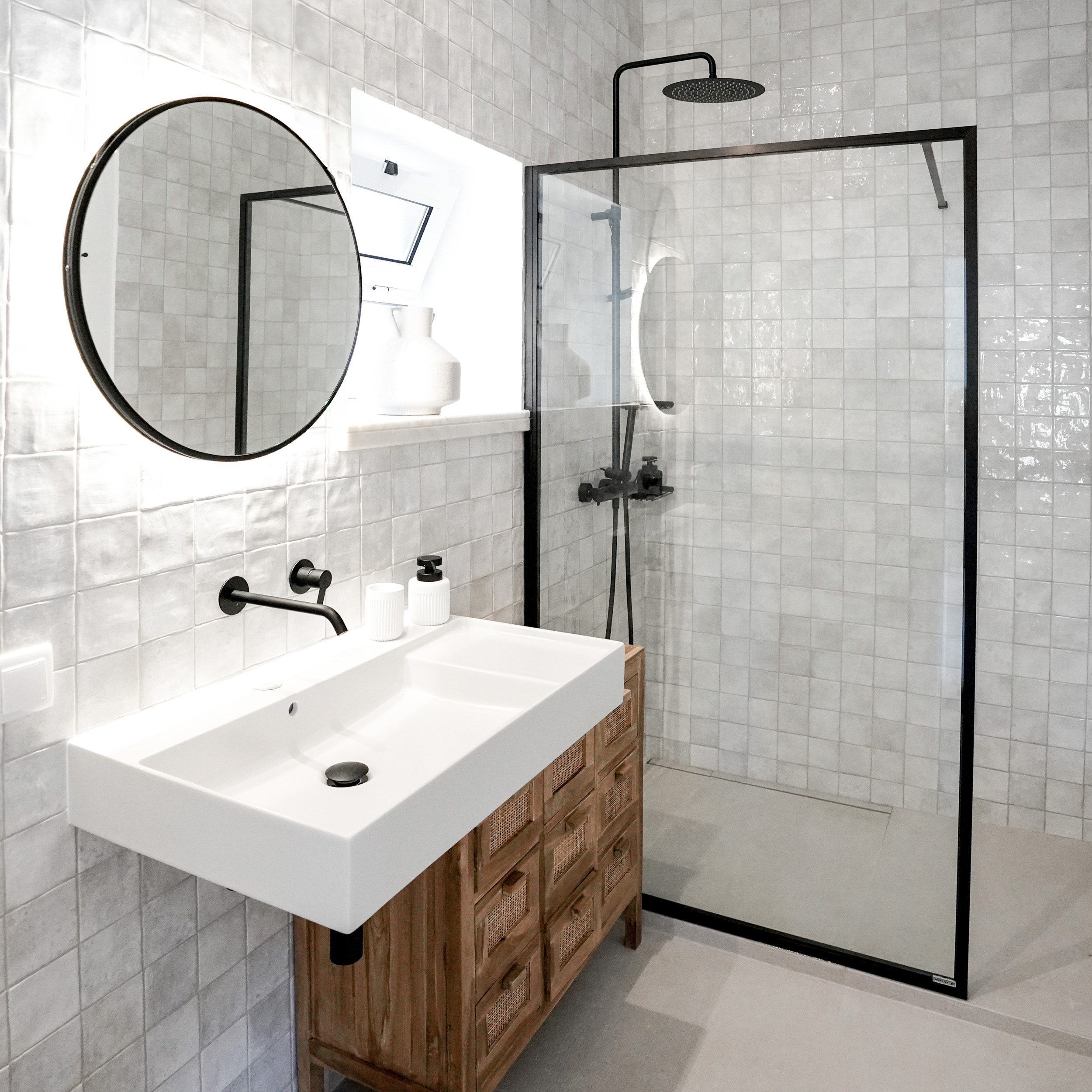
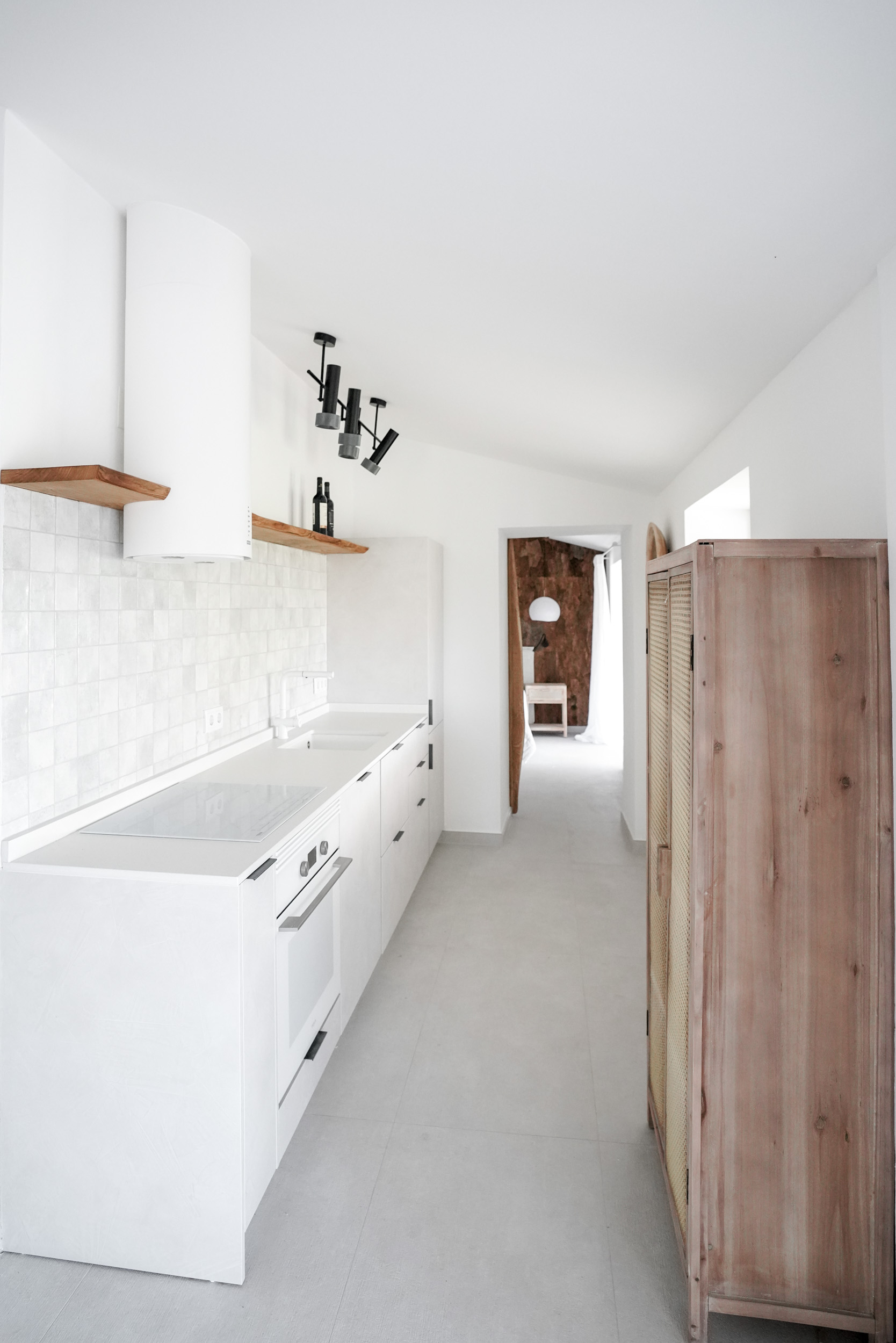
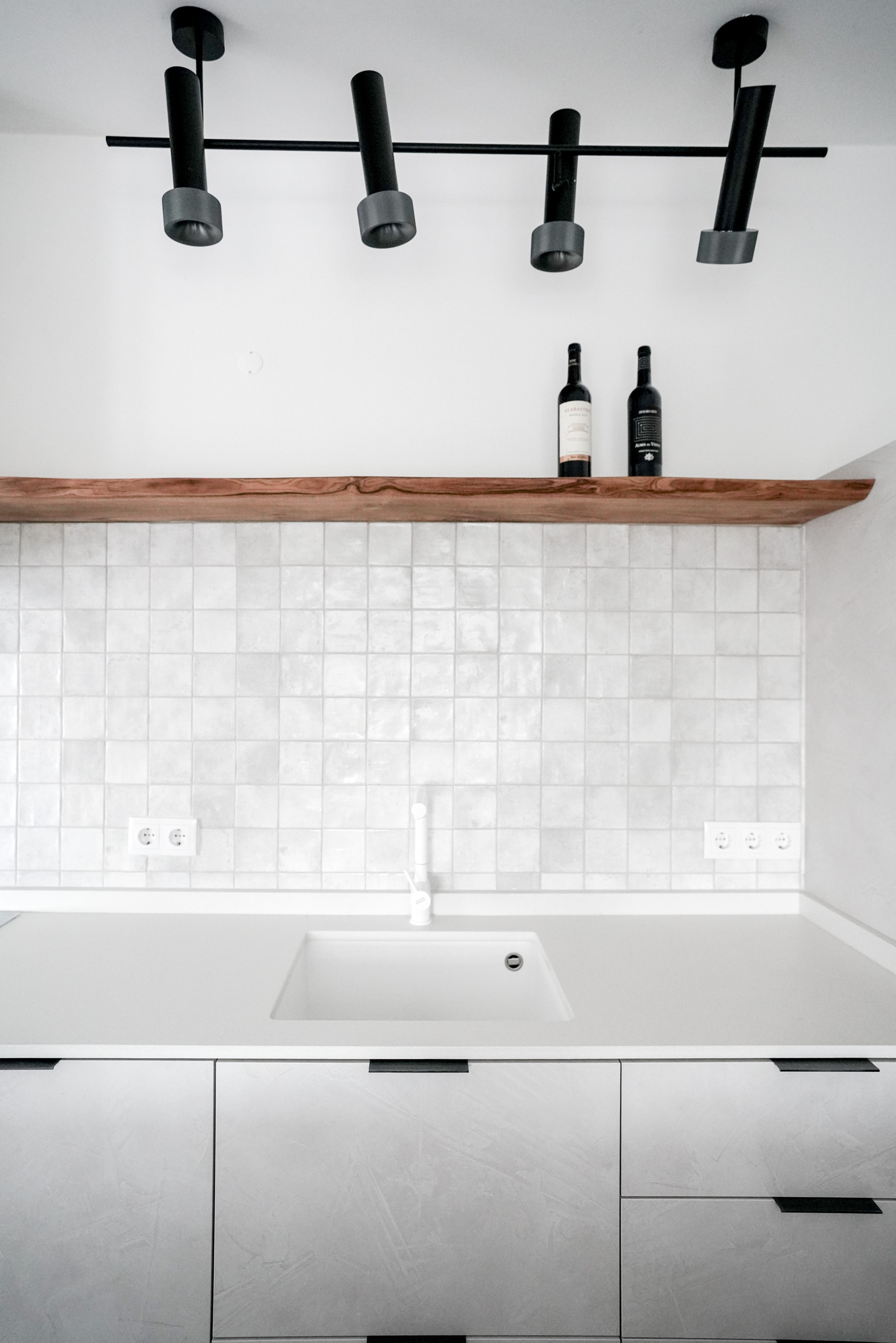
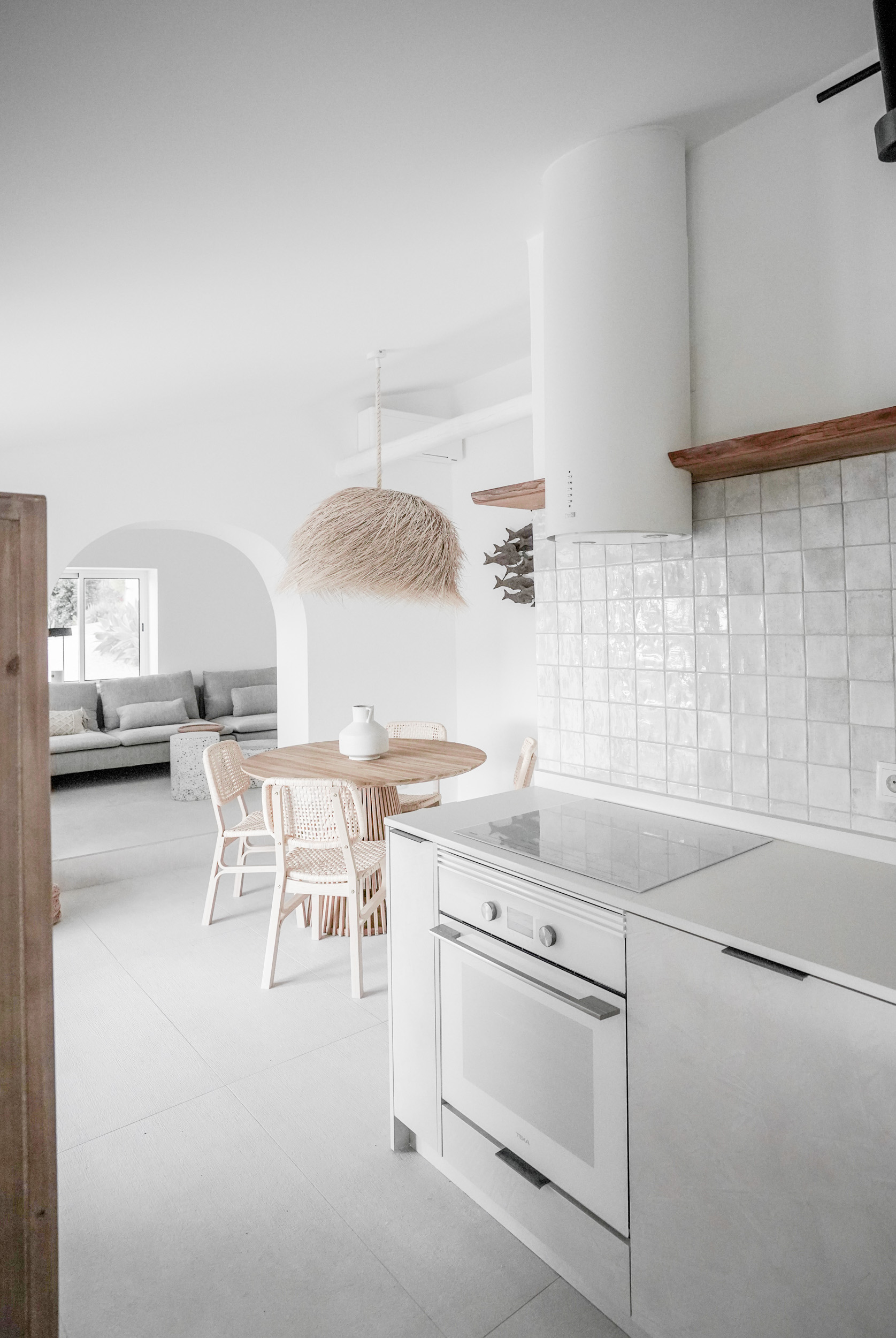
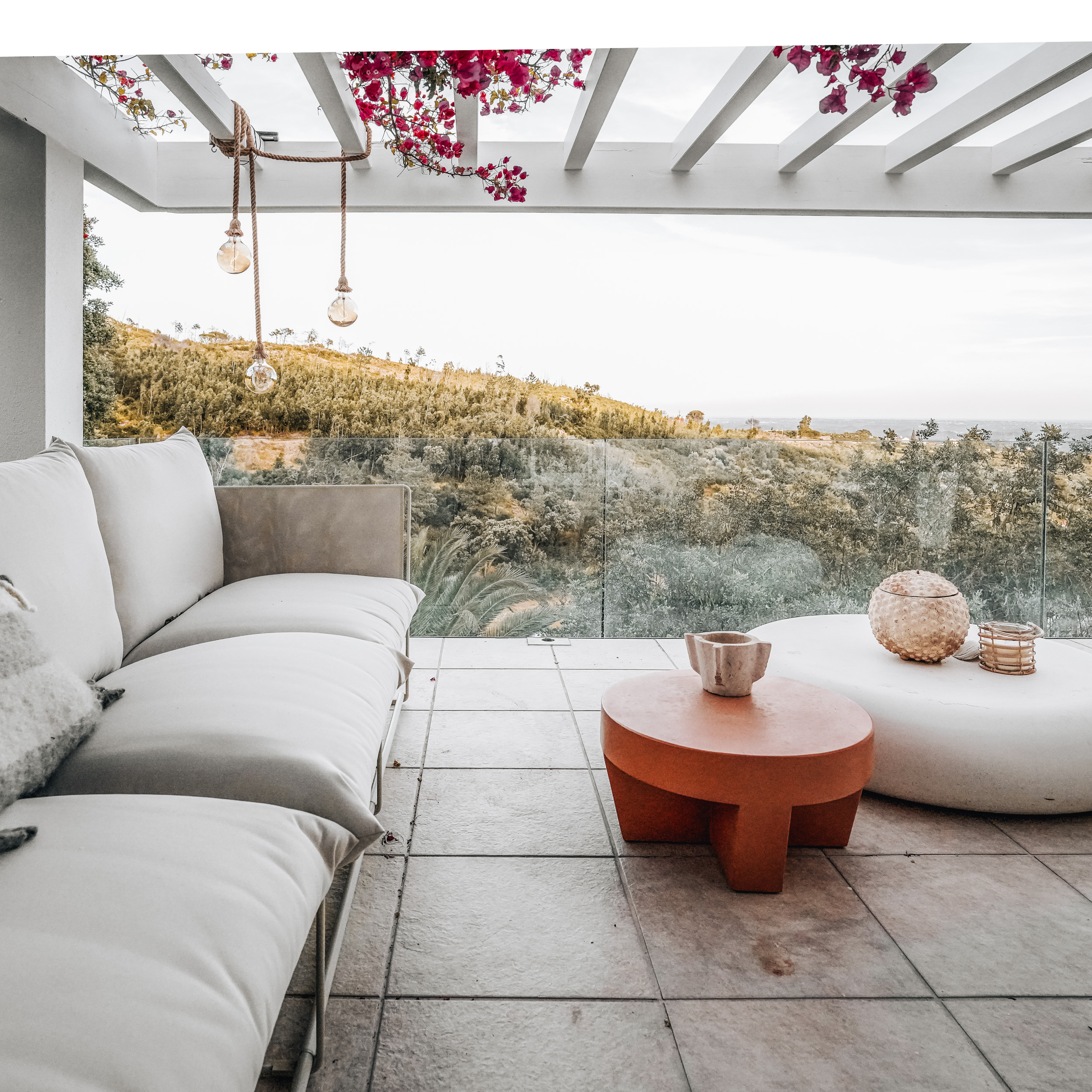
How to Order Furniture in Portugal?
We choose more carefully from the local offerings. We ordered the kitchen from a local kitchen studio. Here the experience was a bit more challenging due to a hiccup with the details, but the studio managed to fix it and everything was as it should be. For individual pieces of furniture, I started looking for local e-shops where you can place orders. I found several great brands, new to me, and placed orders with them. The construction company thus became our liaison officer for the entire project. We needed an address where packages could be received, and this was arranged with the construction company, which then moved everything to the site and installed it until the interior was ready. It was a bit of a challenge to organize the delivery of a new piece and the pickup of the damaged one from afar.
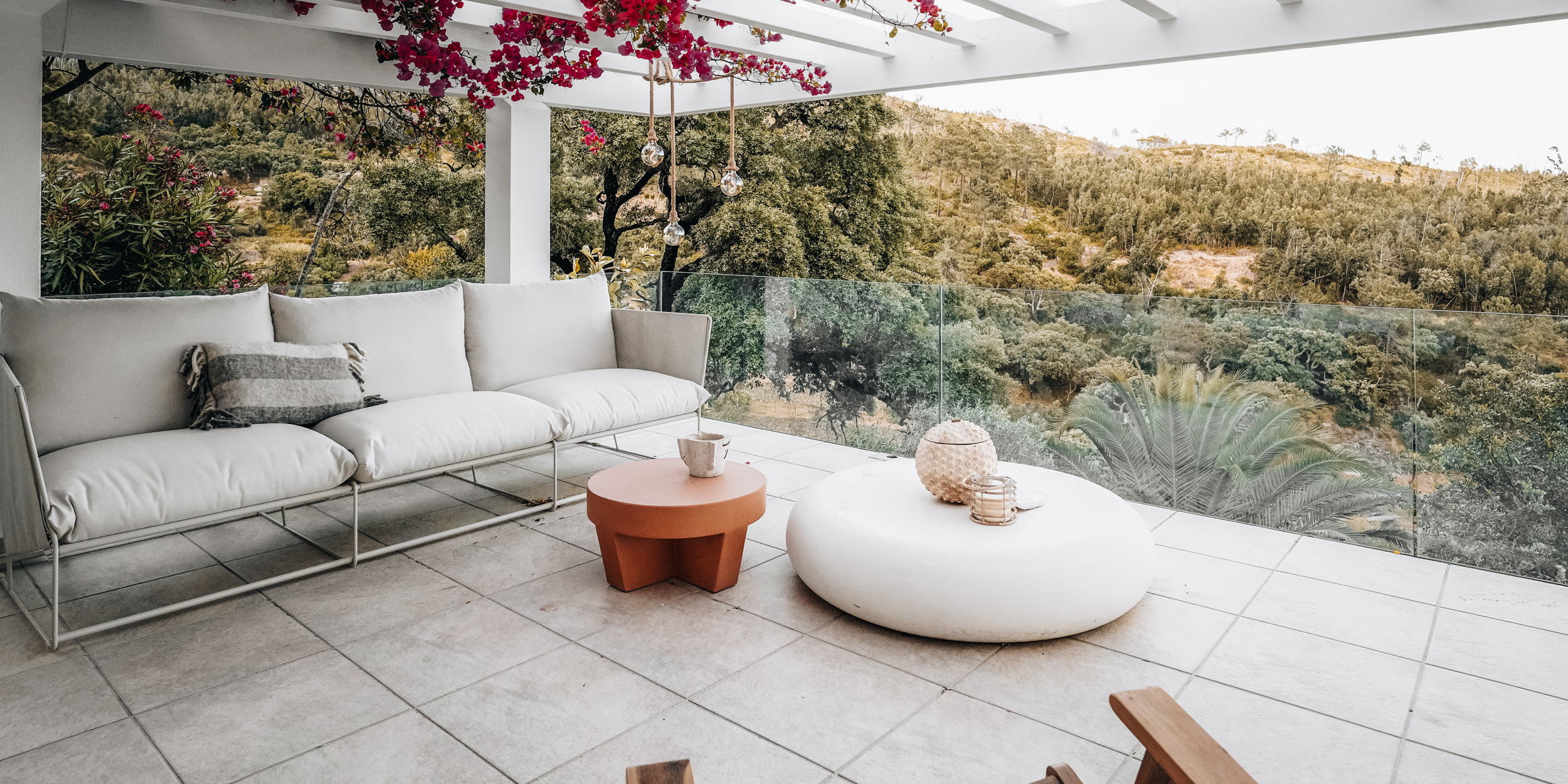

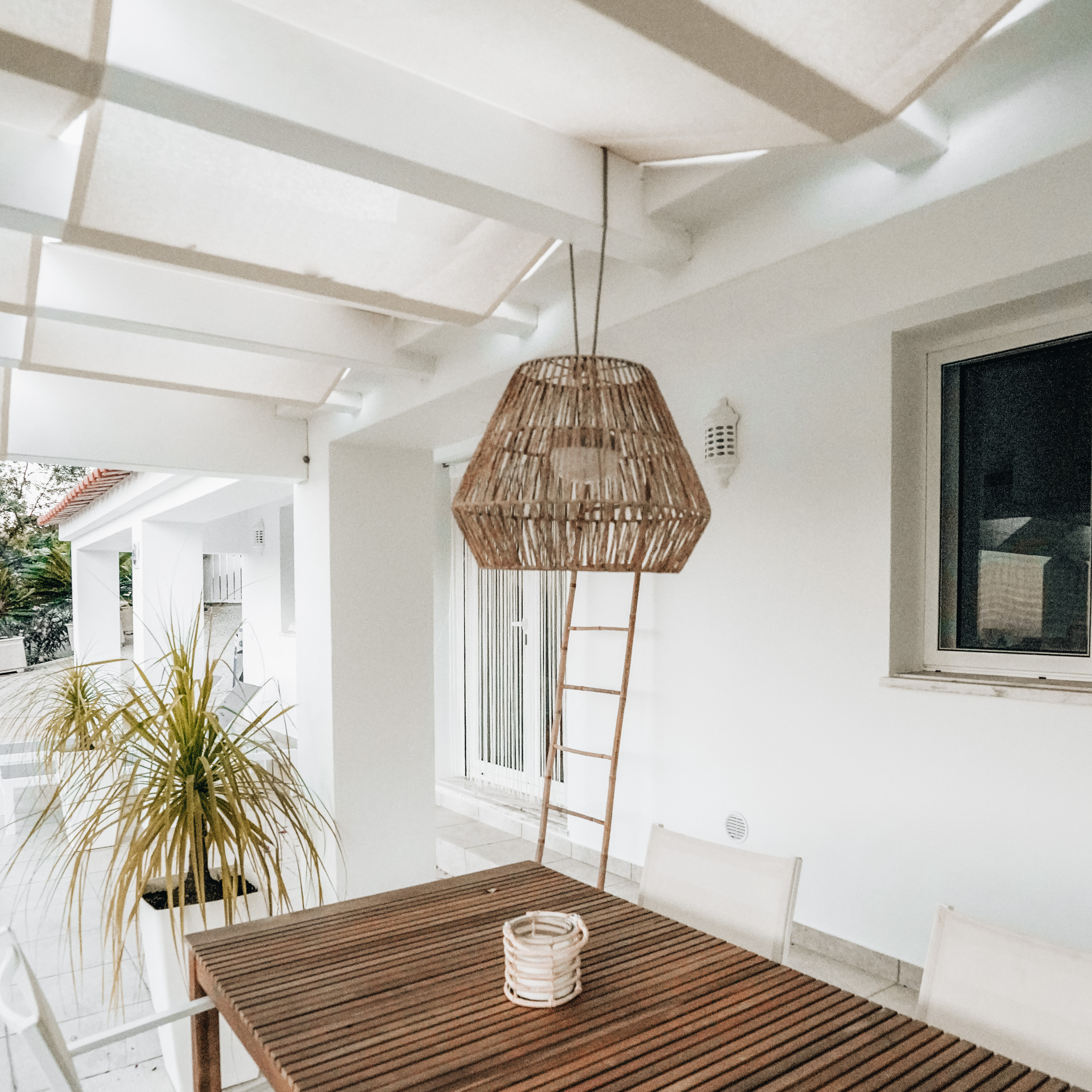
Final Recommendations?
Remote execution is possible. It requires steady nerves, thorough communication, and a willingness to compromise on your demands for perfect detail. If you set your expectations a bit lower, you'll be thrilled with the result. It's good to plan construction checks well in advance and buy plane tickets in time, as last-minute ones are terribly expensive. It might seem that with such remote execution and long travels (sometimes up to 9 hours), you would spend a tremendous amount of money. A retrospective analysis just confirmed that the further the execution is from our studio, the time required for construction checks proportionally decreases. It's because it's maximally efficient. And then, of course, you need a client who will have a similar overview as the architect. The time spent on the entire project was, in the end, comparable to executions in the Czech Republic.
What did it look like before?
Look at the original condition. It's a small demonstration that the original equipment and the dismal condition can be changed beyond recognition through renovation and drastic intervention. Focus on the location, the surroundings and the interior space that has potential. We'll take care of the rest.


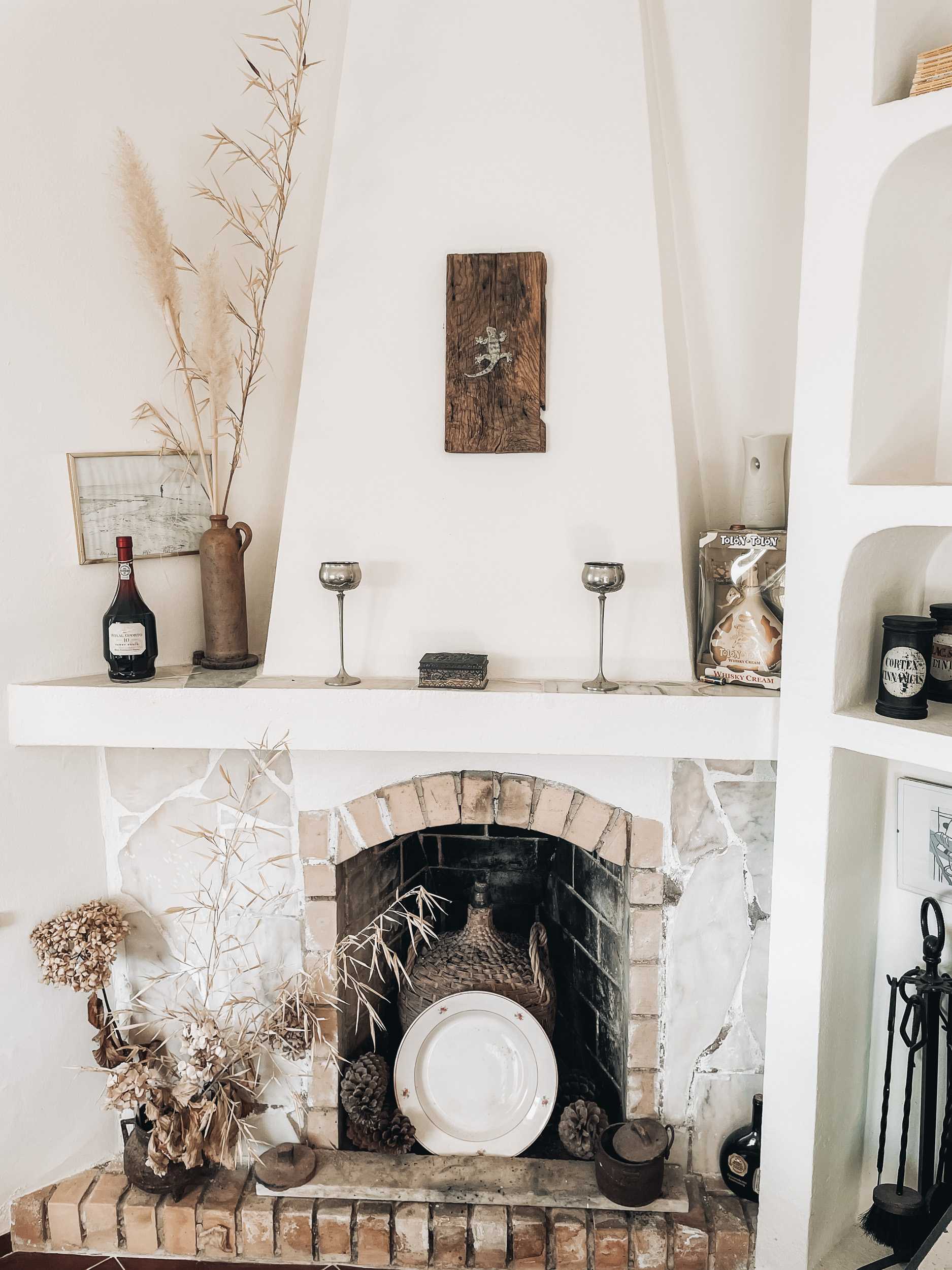

— Let's meet!
Do you have a similar project that you would like to discuss with us? Fill out this short questionnaire, let us know a little about your project and we will get back to you soon.
by Radka - 10. 8. 2023